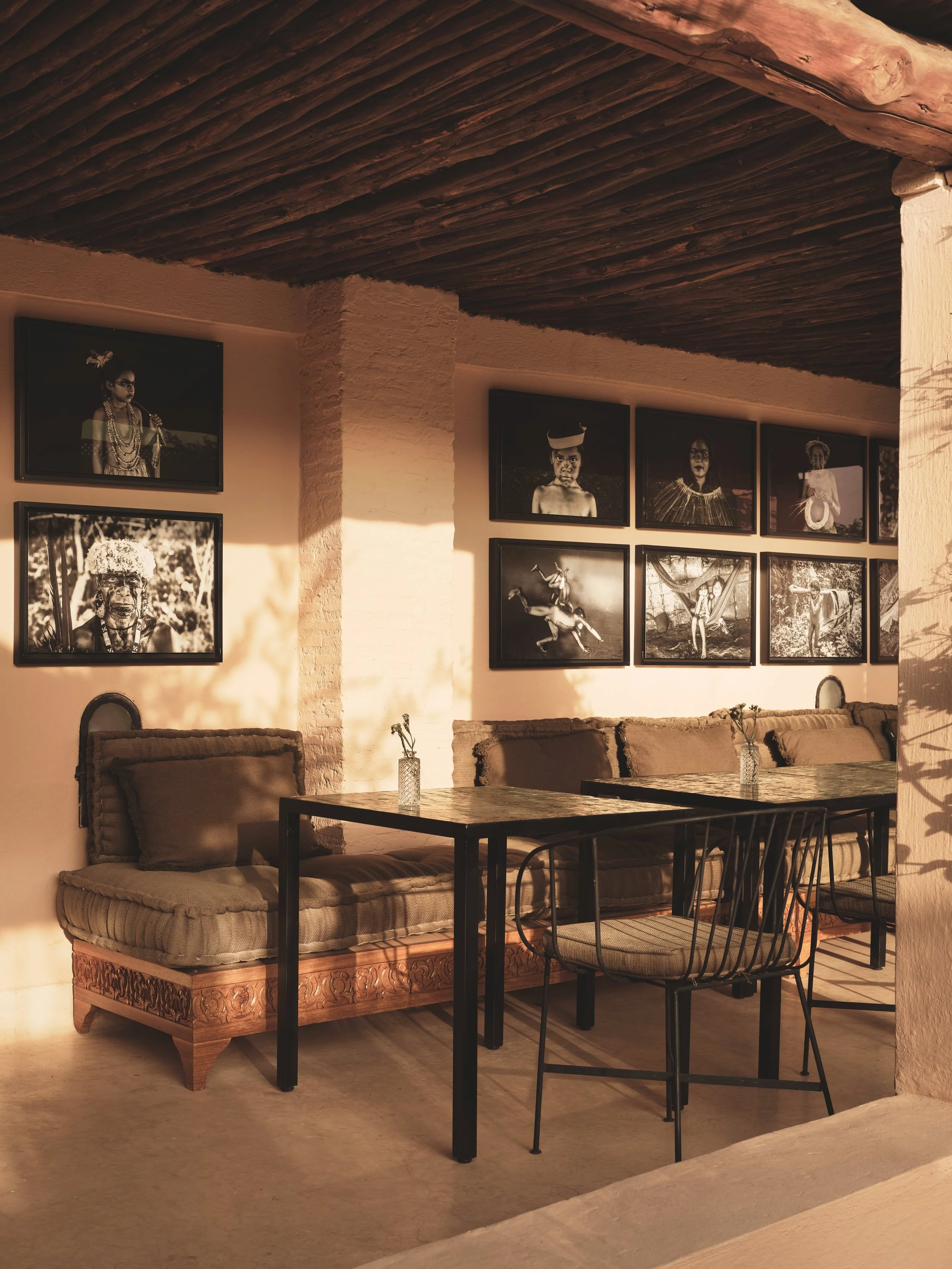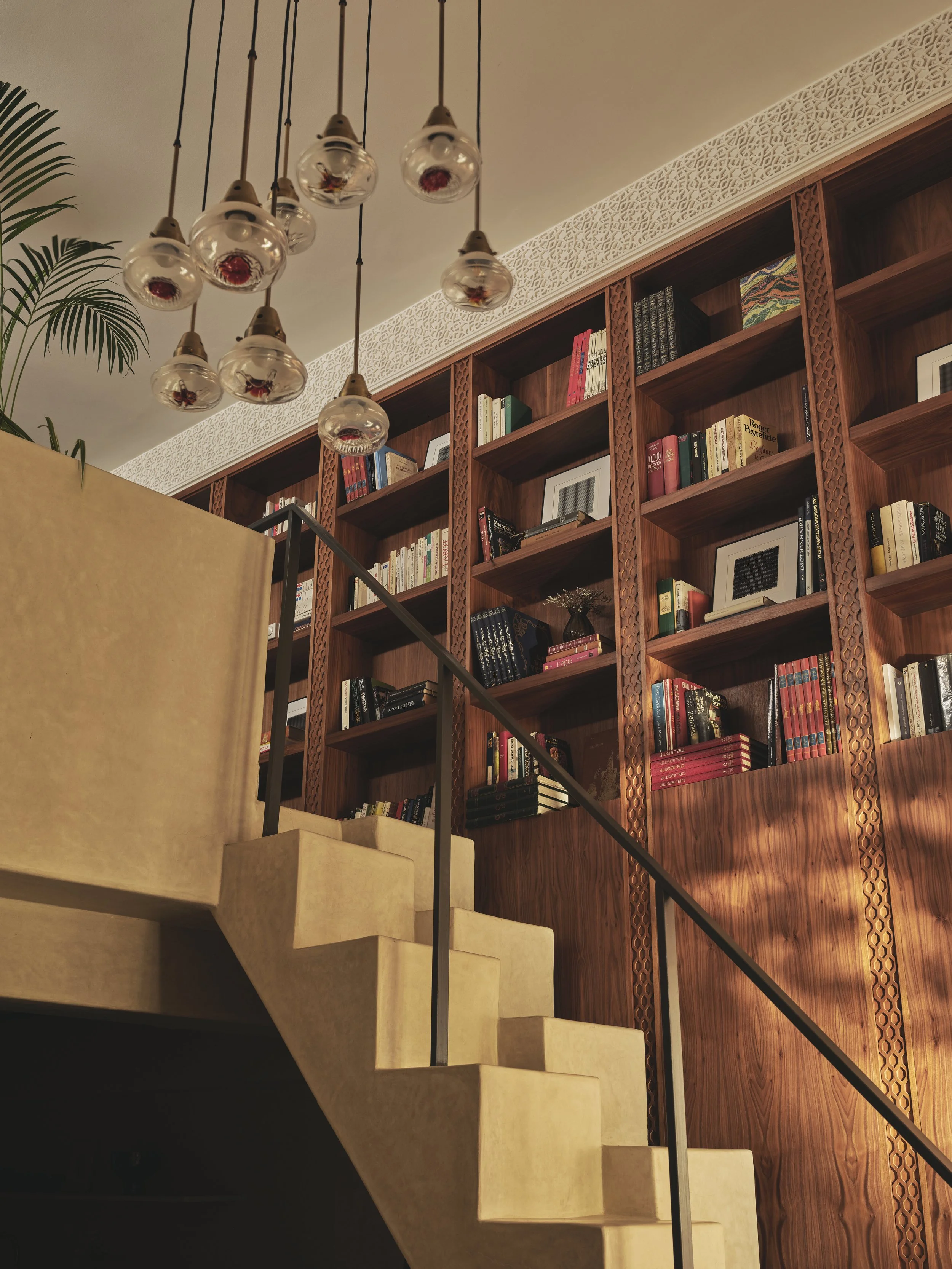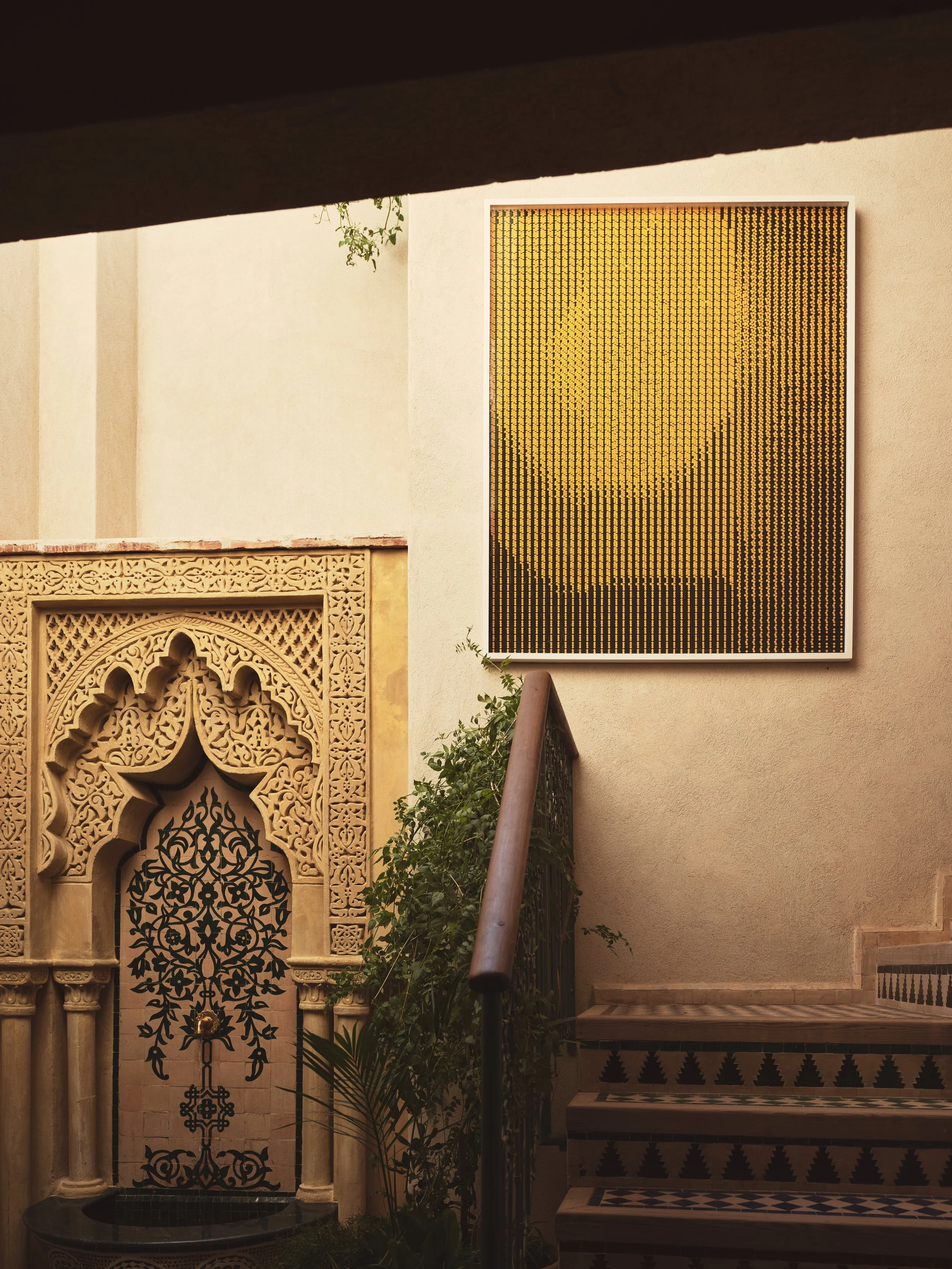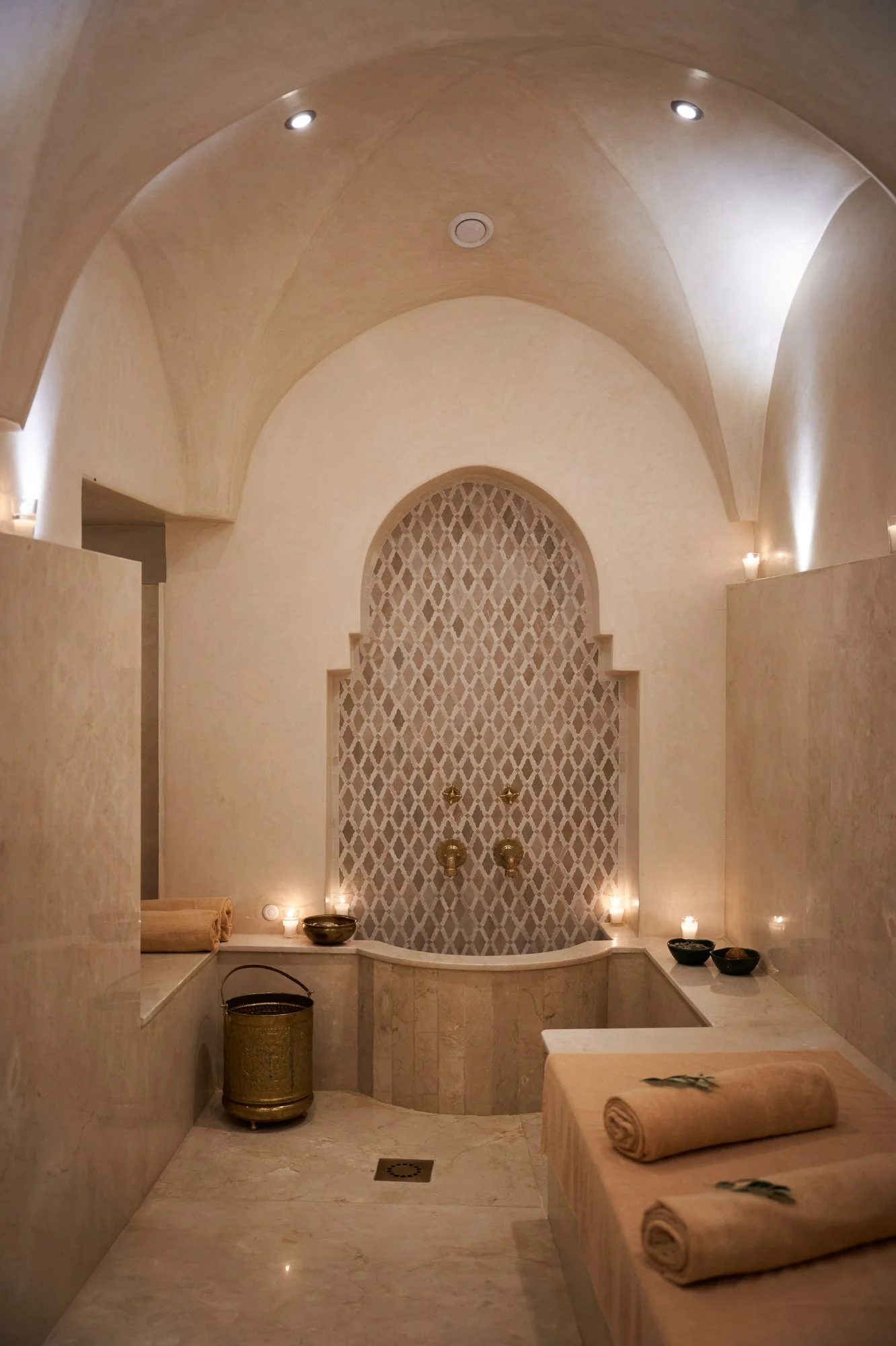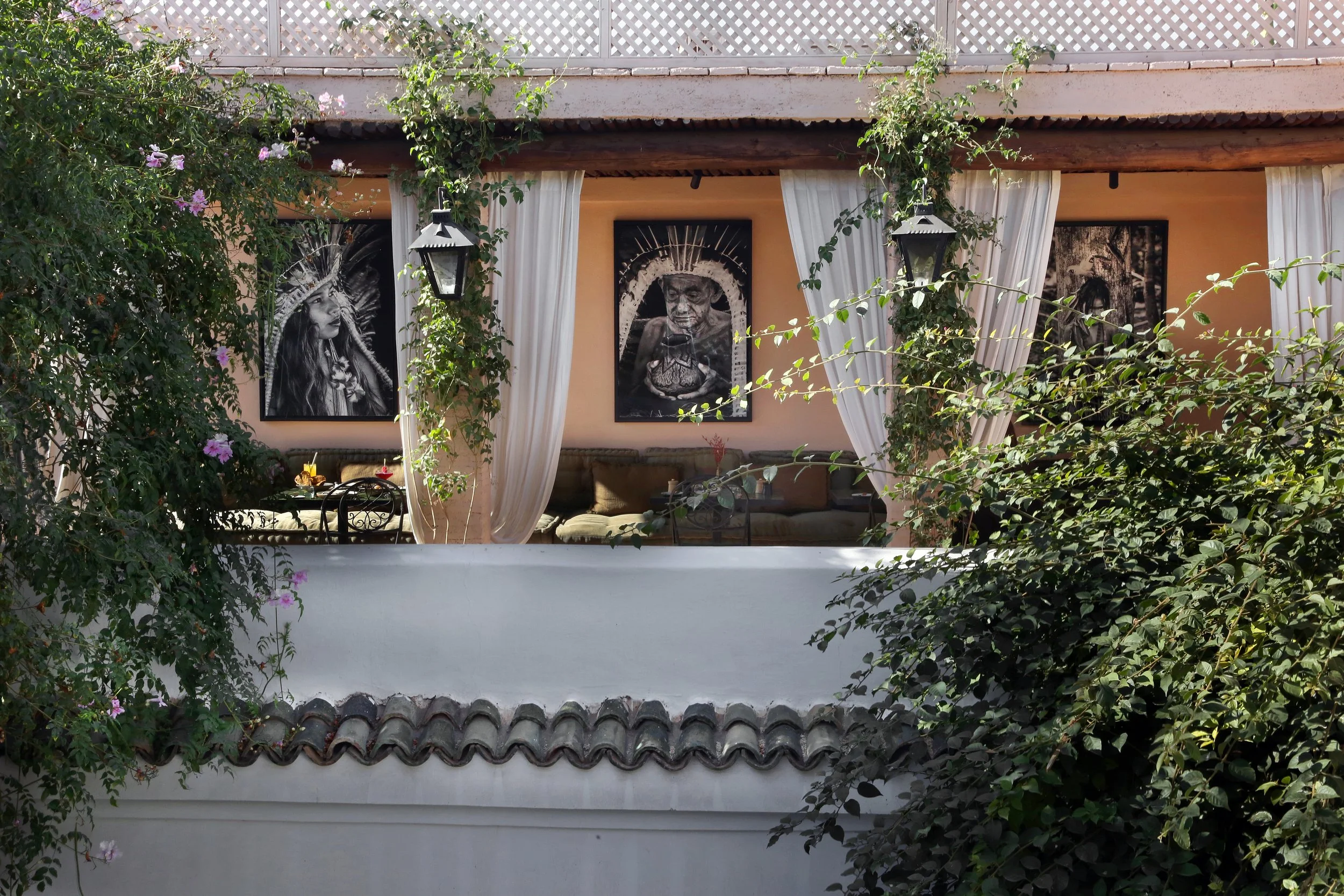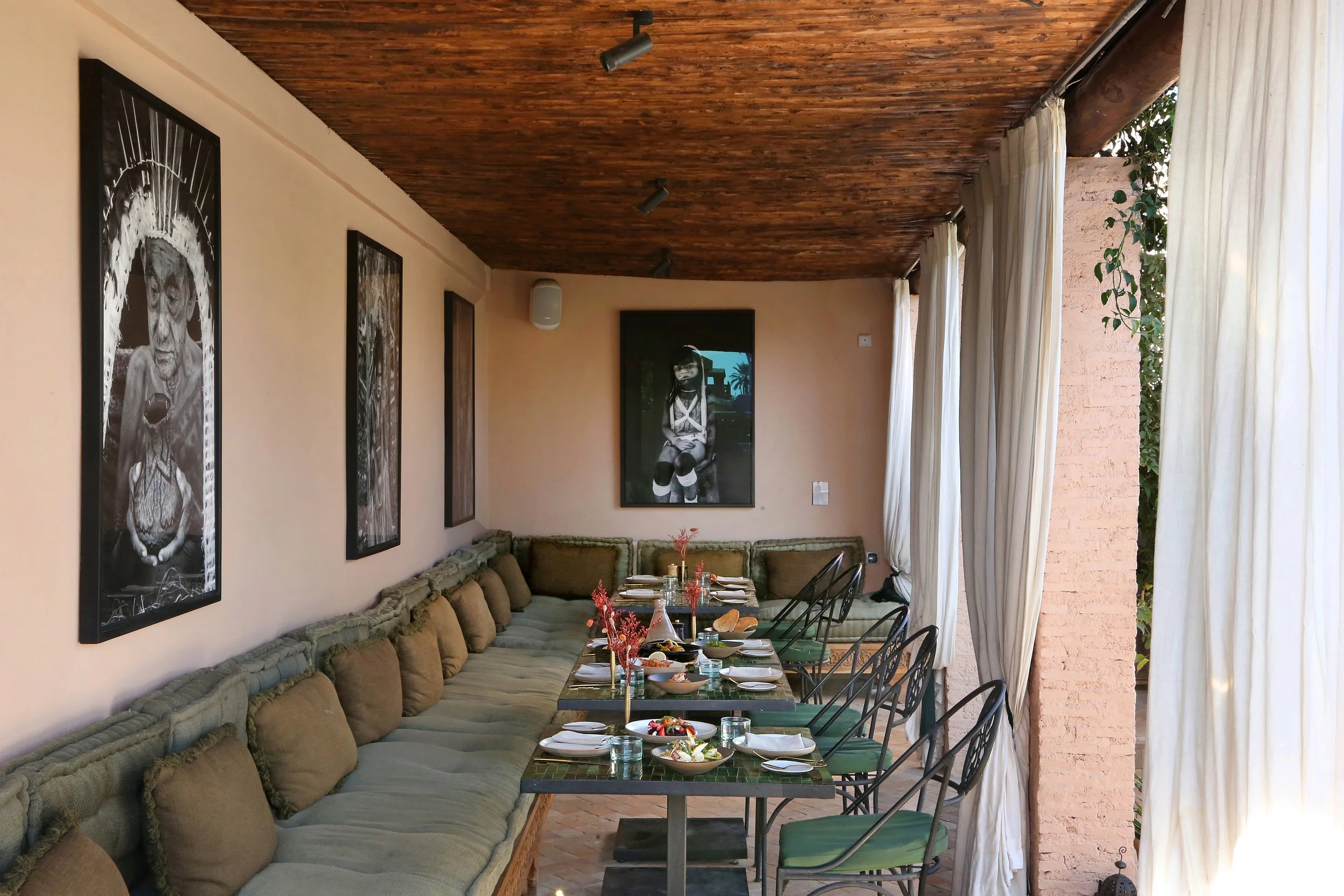IZZA Marrakech: The Medina’s Most Creative Hideaway
As soon as I arrived at IZZA, tucked into the maze-like heart of the Marrakech Medina, I was welcomed with a glass of hibiscus and cinnamon tea and a plate of Moroccan pastries. One of them, the briouat—a delicate almond-filled triangle wrapped in flaky layers of pastry—was the kind of welcome that tells you: you're in good hands. For a first taste, it was unforgettable. I was hosted by Karim Irrgang, IZZA’s general manager, whose quiet warmth and attention to detail set the tone for everything that followed.
IZZA is not just a place to sleep. It's a living museum, a creative home, a house of friends. Built from the bones of small Medina homes and riads, the property unfolds like a secret—staircases curling around zellige-tiled fountains, gardens blooming behind unassuming doors, and rooftops opening to the skies of Marrakech. The Medina buzzes just outside, but inside, everything is calm. The walls speak softly in textures of art, colour, and history.
As a Brazilian, something shifted when I sat down on one of IZZA’s deep sofas and saw Sebastião Salgado’s Amazonia photobook resting on the table. It felt like home, as if someone had left a piece of my own world waiting for me. Later, I would discover that IZZA holds 24 original photographs from Amazonia, and by fate or design, one of them hung in my room—Izza, the namesake suite. There was a quiet intimacy in seeing Salgado’s vision of the rainforest framed within these ochre walls. It felt like being exactly where I was meant to be.
And what a room it was.
The Izza suite isn’t just a room—it’s a private riad within the riad. Tucked into its own corner of the property, it has a dedicated entrance that connects directly to the restaurant, yet feels completely secluded. It comes with an arabesque fountain, private rooftop, a plunge pool, sun loungers, and a shaded area to relax, read, or simply enjoy the silence above the Medina.
Inside, the suite is a self-contained home: a cosy living room, a fully equipped kitchen, a private courtyard patio, and a bedroom with curated books and artwork that feels like stepping into your own small library and is deeply luxurious. It’s the kind of place that makes you feel like you're living in Marrakech, not just visiting. Every detail invites you to slow down, breathe, and feel rooted. You could spend a week there and never need to leave.
I also spent time at the spa, which turned out to be one of the most restorative parts of my stay. I didn’t try the hammam, but I had a deeply relaxing massage, tailored with care to what my body needed that day. It was one of those rare treatments where everything—from the pressure to the pace—feels perfectly attuned, like the therapist is listening without needing words. Afterwards, I wandered out to the 10-metre lap pool, nestled in one of the courtyards, where the still water mirrored the soft sky. There’s also a smaller courtyard pool—heated, quiet, and ideal for an afternoon pause. Later, I stopped by Bill’s Bar, named in tribute to architect Bill Willis. Framed pieces from his life and work line the walls, and while I didn’t have a cocktail, just sitting there, surrounded by his spirit and style, felt like being part of something timeless.
Art is not curated here in the traditional sense—it's lived with. It’s around every corner, across every medium, from digital to generative to tactile. The private collection at IZZA features more than 300 pieces, valued at over 5 million euros. But what makes it so compelling isn’t just the number or the price tag—it’s the unlikely and powerful dialogue between AI-generated works, emerging Moroccan voices, and timeless classics.
This is what fascinated me most: how a place can hold a work by a young photographer from the lockdown generation next to a sophisticated piece of generative code-based art, and somehow make it feel completely natural. It’s as if the past, the future, and the now are having a quiet conversation in every hallway.
Some artists are big names—like Refik Anadol, Tyler Hobbs, Dmitri Cherniak. Others are part of Morocco’s emerging generation, nurtured by IZZA’s Associate Artists Programme, a year-long initiative supporting local creatives not just with space and exposure, but with time, food, and care. Artists are invited to be present at IZZA, to let their work breathe in the same space as its guests. The result is a subtle but profound synergy between art and life.
There are no grand gestures at IZZA, only thoughtful ones. The library is quietly stacked with design, architecture, and art books in multiple languages. The boutique offers handmade pieces from young Moroccan designers, carefully chosen for their craftsmanship and story. Even the kitchen is part of a wider mission—the hotel partners with the Amal Centre, a nonprofit that trains local women in hospitality, and regularly brings interns into its culinary team.
And then there’s Noujoum, the rooftop restaurant, named after architect Bill Willis’s former home. “Noujoum” means stars—fitting, since this is where the night truly opens up. Whether it’s a quiet breakfast, a long sunset dinner, or a late drink under the stars, Noujoum captures everything IZZA stands for: elegance without effort, simplicity without compromise, and beauty without needing to announce itself.
What surprised me most is that Noujoum is more than a hotel restaurant—it’s a real local hotspot. After a few conversations in the Medina, it became clear that this is one of the most talked-about new places to eat in Marrakech. The kitchen is led by chefs that bring together technique and tradition in a menu that feels both rooted and adventurous. It's the kind of place you want to come back to, even if you're not staying at the hotel.
The other rooms at IZZA carry names that read like a who’s-who of Marrakech’s creative past—Brion, Marella, Jack, Talitha, Grace—but they don’t lean on nostalgia. Instead, each space feels like a fresh take on timelessness. Soft textures, Berber heritage, contemporary light.
There’s something about IZZA that stays with you. Maybe it’s the way history and future seem to sit so easily side by side. Maybe it’s how every detail feels intentional, but never overthought. Or maybe it’s just the sense that someone here, long before you arrived, imagined what it would mean to truly welcome a guest—not just into a room, but into a world.
IZZA doesn't ask for your attention. It earns it. Quietly. Beautifully. Honestly.
And once you’ve been, it’s very hard to forget.

